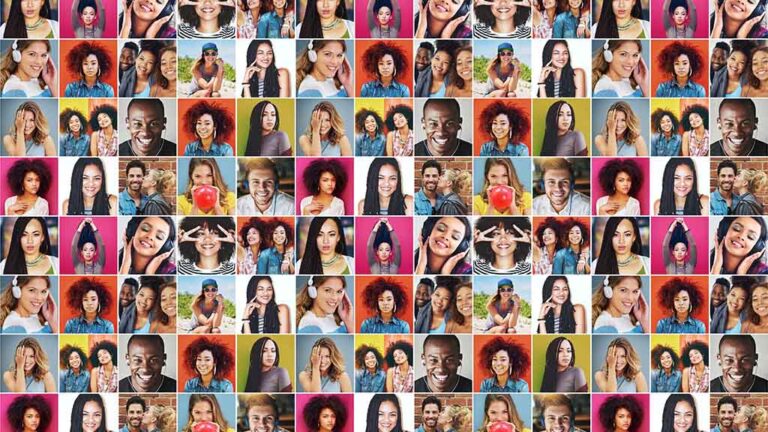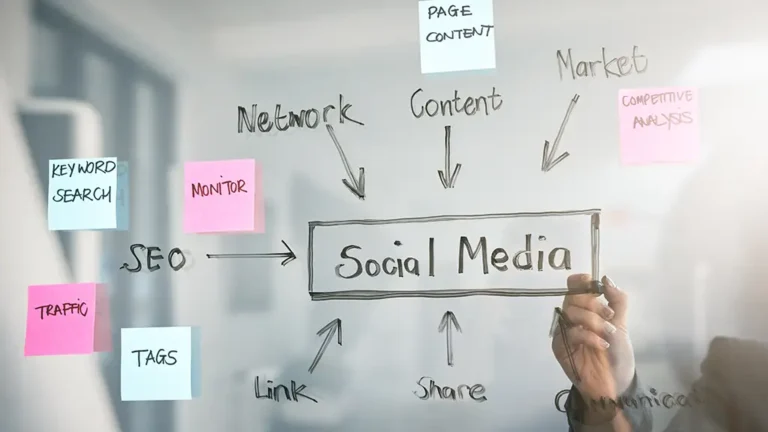The Social Media Trends to Watch in 2025: What Your Brand Needs to Know
Social media is one of the most dynamic aspects of digital marketing, evolving at a pace that can be challenging for brands to keep up with. In 2025, staying ahead of trends is not just an advantage—it’s a necessity for maintaining relevance and engaging with your audience effectively. Platforms continue to adapt to shifting user behaviors, emerging technologies, and societal changes, creating both challenges and opportunities for businesses.
For brands, understanding these trends is key to crafting a successful strategy. By staying informed about what’s gaining traction, you can position your brand as an industry leader while ensuring your marketing efforts align with audience expectations. Partnering with a social media management agency can help you navigate these trends, ensuring your strategies are innovative, impactful, and tailored to your goals.
As we dive into the key social media trends of 2025, consider how your brand can adapt to these shifts to stay ahead in an ever-competitive digital landscape.
The Continued Rise of Short-Form Video
Short-form video continues to dominate in 2025, with platforms like TikTok, Instagram Reels, and YouTube Shorts driving the majority of engagement. This format remains a favorite for both users and brands because of its ability to capture attention quickly and convey messages effectively within seconds. In a world where attention spans are shrinking, short-form video provides a dynamic and digestible way to connect with audiences.
One of the reasons for its enduring popularity is the format’s versatility. From behind-the-scenes glimpses and product tutorials to user-generated challenges and branded campaigns, short-form videos offer endless opportunities for creativity. Brands can experiment with storytelling, humor, and even viral trends to reach their target audience while showcasing their personality.
Another factor contributing to the success of short-form video is its algorithmic favorability. Platforms prioritize engaging videos in their feeds, making it easier for high-quality content to gain visibility organically. For example, a brand that creates a relatable and entertaining TikTok using trending audio is likely to reach users far beyond its follower base.
In 2025, leveraging short-form video effectively will require consistency and a willingness to adapt to platform-specific trends. Brands that prioritize this format in their social media strategies will continue to see high engagement and audience growth.
The Growth of Emerging Platforms
As established platforms like Instagram, Facebook, and YouTube maintain their dominance, emerging platforms are carving out unique niches in the social media ecosystem. In 2025, platforms like BeReal, Lemon8, and Threads are gaining traction by offering features and experiences that cater to evolving user preferences.
BeReal, for example, has disrupted traditional social media by focusing on authenticity. Its daily prompts encourage users to share unfiltered moments, creating a stark contrast to the polished content often seen on other platforms. For brands, this means embracing raw, behind-the-scenes content that feels genuine and relatable.
Lemon8 combines elements of Pinterest and Instagram, offering an aesthetic-driven platform for creative expression and discovery. It’s particularly popular among Gen Z and Millennials who value curated, interest-based content. Brands can use Lemon8 to showcase visually engaging posts that inspire, educate, or entertain, aligning with the platform’s ethos of creativity and individuality.
Threads, Meta’s text-based platform integrated with Instagram, provides opportunities for real-time conversations and engagement. It allows brands to connect with their audience in a more conversational and interactive way, sharing updates, hosting discussions, and fostering community.
The rise of these platforms highlights the importance of diversification in social media strategies. By experimenting with emerging platforms, brands can reach new audiences, stay ahead of competitors, and capitalize on untapped opportunities in the digital landscape.
The Shift Toward Long-Term Partnerships
In 2025, brands are increasingly turning to long-term influencer partnerships rather than focusing on one-off campaigns. This shift reflects a growing understanding of the value that sustained relationships bring to both brands and influencers. Long-term collaborations help brands create a consistent narrative, fostering deeper connections with audiences and building trust over time.
Influencers today are no longer just hired for short-term promotions; they are becoming integral parts of a brand’s ongoing storytelling and marketing efforts. This strategy allows influencers to genuinely align with the brand, often resulting in more authentic endorsements. For instance, a fitness influencer partnering with a wellness brand over several months can share their personal experience with the brand’s products, creating a deeper, more meaningful connection with their followers.
Long-term partnerships also allow brands to create more dynamic and varied content over time. Instead of one-off posts, these partnerships enable brands and influencers to co-create campaigns that span multiple touchpoints, such as Instagram stories, YouTube videos, and live streams. This continuous interaction ensures that both the brand and influencer remain top of mind, while providing more opportunities to engage and convert the audience.
Moreover, long-term relationships help build authenticity. When influencers endorse a product or service repeatedly over time, it signals to their followers that the partnership is genuine and not just transactional. Brands benefit from this authenticity, as it enhances their credibility and cultivates loyal customer bases. For brands that can invest in sustained influencer relationships, the return on investment (ROI) is often much higher than with one-off promotions.
Influencers as Content Creators
In 2025, influencers are not just content amplifiers; they are content creators. As brands seek to engage audiences in new, creative ways, influencers have emerged as co-creators who contribute original content to marketing campaigns. Influencers have a deep understanding of their followers’ preferences and platform nuances, making them uniquely equipped to create content that resonates with their audience.
These collaborations often go beyond simple product placements. Brands are working with influencers to co-create unique campaigns, such as influencer-designed product lines or interactive campaigns that involve audience participation. For instance, a beauty brand might work with an influencer to develop a limited-edition product, offering their followers exclusive access and creating excitement around the launch. These types of co-created experiences provide authenticity, as influencers who genuinely love a brand’s products are more likely to produce original content that feels genuine and appealing to their audience.
Furthermore, influencers bring specialized knowledge and creative skills to the table. From producing engaging short-form videos on TikTok to designing Instagram-worthy photo shoots, influencers are adept at creating high-quality content that resonates with audiences in a way traditional advertising often cannot. By collaborating with influencers as content creators, brands tap into their creativity and cultural awareness, ensuring their campaigns are fresh and in tune with current trends.
This trend reflects a broader shift in the influencer space, where influencers are seen less as endorsers and more as strategic creative partners. By involving influencers early in the content creation process, brands can build more authentic, engaging campaigns that connect with their audience on a deeper level.
Metrics That Matter in 2025
As influencer marketing continues to mature, it’s becoming increasingly important for brands to focus on the right metrics to measure the success of their campaigns. In 2025, brands are moving away from vanity metrics like follower count and instead focusing on meaningful engagement, conversions, and authenticity.
Engagement rates, such as likes, comments, shares, and saves, provide better insight into how well content is resonating with the audience. High engagement levels indicate that the influencer’s content is being well-received and prompts interactions, which are critical for boosting brand visibility. For instance, a highly engaged audience is more likely to share content with their networks, amplifying the reach of the campaign beyond the influencer’s followers.
Moreover, brands are increasingly focusing on authenticity as a key metric. This is measured by the quality of the engagement and the level of trust the audience has with the influencer. Negative sentiment, fake engagement, or inauthentic endorsements can be damaging, so understanding how an influencer’s followers feel about their content is essential for measuring long-term campaign success.
Conversion tracking is another vital metric for evaluating the effectiveness of influencer campaigns. This includes tracking how many website visits, sign-ups, or purchases were driven by the influencer’s content. Tools like unique discount codes, affiliate links, or custom landing pages make it easier for brands to track conversions directly attributed to influencer campaigns. By focusing on conversions, brands can ensure that their investments in influencer marketing are delivering real, measurable results.
In 2025, measuring ROI goes beyond simple reach. Focusing on engagement, authenticity, and conversions provides a more comprehensive view of how influencer partnerships impact business goals. These metrics help brands refine their strategies and ensure they are investing in the right influencer partnerships to drive success.
The Role of AI and Data Analytics
In 2025, artificial intelligence (AI) and data analytics are revolutionizing influencer marketing, making it more precise, efficient, and impactful than ever. These tools allow brands to identify the right influencers, predict campaign outcomes, and optimize performance in real time. AI-driven platforms analyze vast amounts of data, such as engagement rates, audience demographics, and content performance, to help brands select influencers whose audiences align with their goals.
AI tools also simplify the process of vetting influencers. Brands can identify fake followers or detect inflated engagement rates, ensuring their marketing budget is spent on genuine partnerships. For example, an AI-powered platform might flag an influencer with a large follower count but low engagement as a poor fit, allowing the brand to pivot to a more effective collaborator.
Data analytics enhances campaign planning by providing insights into audience behavior. Predictive models can forecast how a campaign will perform based on historical data, allowing brands to adjust their strategies before launch. For instance, analytics might reveal that a particular type of content resonates best with the target audience, enabling brands to refine their approach for maximum impact.
AI also plays a critical role in performance tracking. Tools can monitor metrics like click-through rates, sales conversions, and sentiment analysis in real time, offering brands a clear view of what’s working and what isn’t. This allows for rapid adjustments to campaigns, ensuring higher ROI and more effective use of resources.
By integrating AI and data analytics, brands can take a more strategic approach to influencer marketing, making informed decisions that drive measurable results and foster stronger audience connections.
Influencers and Brand Activism
In 2025, influencer marketing goes beyond promoting products and services—it’s also a platform for championing social and environmental causes. Gen Z and Millennials, who make up a significant portion of social media audiences, expect the influencers and brands they follow to align with their values. This expectation has made brand activism a central element of successful influencer campaigns.
Influencers who advocate for meaningful causes resonate deeply with their audiences. Whether it’s sustainability, diversity and inclusion, or mental health awareness, influencers who are vocal about these issues foster trust and loyalty. Brands that partner with these influencers can amplify their message while demonstrating their commitment to making a positive impact.
However, authenticity is critical. Performative activism—where brands or influencers appear to support a cause without taking meaningful action—can backfire, leading to audience backlash and reputational damage. For example, a fashion brand promoting sustainability through an influencer campaign must back up its messaging with transparent practices, such as ethical sourcing and reduced waste.
Successful campaigns often integrate activism into the brand’s core values. For instance, a beauty brand might collaborate with an influencer to promote mental health awareness during a product launch, donating a portion of sales to related charities. These partnerships show that the brand’s commitment goes beyond marketing, creating deeper connections with socially conscious audiences.
In 2025, the intersection of influencer marketing and brand activism offers an opportunity for meaningful engagement. By choosing authentic partnerships and aligning with causes that resonate with their audience, brands can drive positive change while building stronger relationships.
Challenges in Influencer Marketing
Despite its many benefits, influencer marketing in 2025 comes with significant challenges that brands must navigate carefully. One of the biggest hurdles is maintaining authenticity. With influencer collaborations becoming more common, audiences are increasingly wary of overly promotional content. To succeed, brands must ensure their campaigns feel genuine and resonate with the influencer’s audience.
Ad fatigue is another challenge. With so many influencers promoting products, audiences may feel overwhelmed by constant advertising. This makes it crucial for brands to stand out with creative, engaging campaigns that add value rather than clutter. For instance, interactive campaigns, such as challenges or live Q&A sessions, can capture attention and foster deeper engagement.
Transparency regulations have also become stricter, requiring influencers and brands to clearly disclose sponsored content. While these rules enhance trust, they can sometimes make campaigns feel overly commercial. Brands must find ways to balance transparency with authenticity, such as crafting content that seamlessly integrates the promotion into the influencer’s narrative.
Finally, the increasing reliance on data introduces ethical considerations. Overly targeted campaigns that feel intrusive can alienate audiences, while mishandling data can lead to reputational risks. Brands must prioritize ethical practices, such as obtaining user consent and being transparent about data usage, to maintain trust.
By addressing these challenges with thoughtful strategies and authentic partnerships, brands can navigate the complexities of influencer marketing and continue to achieve success.
Future Trends in Influencer Marketing
The future of influencer marketing is shaped by innovation and adaptability. One of the most exciting trends is the rise of virtual influencers—AI-generated personas that offer complete control over branding and messaging. These influencers, like Lil Miquela, can deliver consistent content and engage audiences without the unpredictability of human collaborators. While still a niche concept, virtual influencers are gaining traction as brands explore new ways to connect with audiences.
Social commerce is another trend set to grow in 2025. Influencers are increasingly becoming integral to the shopping experience, with platforms like Instagram and TikTok offering features like shoppable posts and livestream commerce. These tools allow influencers to drive sales directly, creating a seamless path from inspiration to purchase.
Hybrid campaigns that combine influencer content with user-generated content are also on the rise. For example, a brand might launch a campaign featuring both professional influencers and everyday customers, creating a sense of community and amplifying reach through organic sharing.
Finally, personalization will play an even greater role in influencer marketing. AI tools will enable brands to create highly tailored campaigns that speak directly to individual audience segments, enhancing relevance and engagement.
In 2025 and beyond, influencer marketing will continue to evolve as a dynamic and essential component of brand strategy. By embracing new trends, maintaining authenticity, and adapting to changing audience expectations, brands can unlock the full potential of influencer marketing in a rapidly shifting digital landscape.







